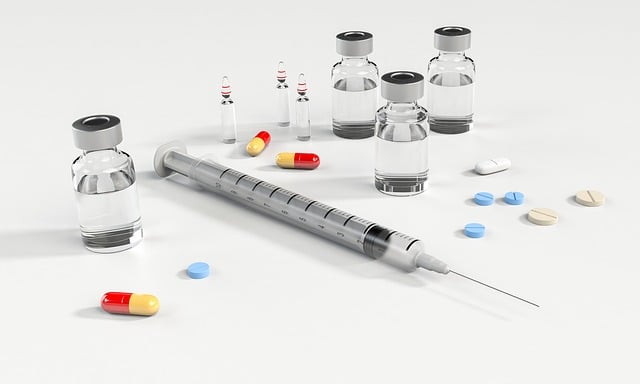
At MDCAT1.com, Explore Cholinergic Agonists! Delve into the realm of pharmaceuticals that activate the parasympathetic nervous system.
Parasympathomimetic are essential for promoting restorative reactions. Learn about their complicated effects on biological systems, therapeutic uses, and mechanisms. Come along as we explore the fascinating world of agonists and their significant impact on human physiology.
Cholinergic Agonists
Cholinergic Neuron:
A cholinergic neuron is a type of nerve cell or neuron that uses the neurotransmitter acetylcholine to transmit signals within the nervous system. They play a variety of roles in the nervous system. Including controlling autonomic processes like heart rate, digestion, and breathing as well as controlling muscular contractions, memory development, and attention.
Cholinergic neuron dysfunction can be a factor in a number of neurological conditions. Including Alzheimer’s disease, which is characterized by an acetylcholine deficiency that impairs cognition and memory.
Synthesis of Acetylcholine:
Step 1: Uptake of Choline & Formation of Acetyl-CoA :
Choline, an essential nutrient, is taken up by cholnergic neurons from the surrounding extracellular fluid. This process can be inhibited by Hemicholinium ( Antagonist).
The mitochondria of the neuron synthesize acetyl-CoA from materials like glucose. The substance acetyl-CoA carries the necessary acetyl groups for acetylcholine production.
The enzyme choline acetyltransferase (ChAT) acetylates choline by transferring acetyl groups from acetyl-CoA to choline.. The result is acetylcholine.
Step 2: Storage
Acetylcholine, freshly synthesized, enters the nerve terminal enclosed in vesicles. The synapse stores the entering acetylcholine within these vesicles, releasing it later.
Step 3: Release
When a nerve terminal experiences an action potential, as a result, it releases acetylcholine from vesicles into the synaptic cleft—a minute gap located between neurons.
Step 4: Binding to Receptors
Acetylcholine molecules, upon release into the synaptic cleft, attach to specific receptors on the target cell, often a muscle cell or another neuron, transmitting the nerve signal.
Step 5: Degradation
Acetylcholinesterase breaks down acetylcholine in the synaptic cleft into its components: acetyl groups and choline.
Step 6: Recycling of choline
The neuron efficiently recycles choline, transporting it back for reutilization in acetylcholine synthesis
CHOLINOCEPTORS
There are two main types of receptors:
1- Nicotinic Receptors:
2- Muscarinic Receptors:
Nicotinic Receptors:
1- Nicotinic receptors, named after nicotine, function as ion channels upon acetylcholine binding.
2- These receptors actively open ion channels in response to acetylcholine, allowing ions to travel across cell membranes.
3- Locations:
Neuromuscular Junctions (PNS): Located at neuromuscular junctions, between motor neurons and muscle cells leading to muscle contractions.
Autonomic Ganglia (PNS):Present in autonomic ganglia and positively impact the transmission of autonomic signals.
Central Nervous System (CNS): Nicotinic receptors are Present throughout the CNS and actively contribute to cognition, memory, and attention.
Note : Mecamylamine blocks the ganglionic receptors.
–Atracurium blocks neuromuscular junction receptors
Muscarinic Receptors:
1- Named after muscarine, an alkaloid, receptors are a type of G-protein-coupled receptor
( Metabotropic receptor ).
2- Acetylcholine binding to muscarinic receptors activates G-proteins, resulting in a variety of intracellular signaling pathways.
3- Locations:
Parasympathetic Target Organs (PNS): Present in targeted organs, regulating functions such as heart rate, digestion, and pupil constriction.
Central Nervous System (CNS): contributing to cognitive functions, memory processes, and neural signaling.
Sub-classes of Muscarinic receptors :
| Sub-type | Location |
|---|---|
| M1 | Gastric parietal cells |
| M2 | Cardiac & Smooth muscles |
| M3 | Bladder, Exocrine glands & Smooth muscles |
| M4 | CNS |
| M5 | CNS |
Mechanism of Acetylcholine signal transduction:
| Acetylcholine Binding | A neurotransmitter called Acetylcholine binds to particular cell membrane receptors. |
| Receptor Activation | The acetylcholine receptors are made to change shape when this binding activates them. |
| G-Protein Activation: | A G-protein found on the inner surface of the cell membrane is activated by the activated ( G-protein-coupled receptors ) GPCR. |
| Activation of Effector Enzyme: | The activated G-protein subunit (Gα) or βγ complex activates an effector enzyme (e.g., phospholipase C or adenylate cyclase |
| Second Messenger Production: | The effector enzyme generates second messengers (e.g., inositol trisphosphate (IP3) and diacylglycerol (DAG) |
| Cellular Response: | Cellular responses brought on by intracellular signaling include modifications in ion channel function, changes in gene expression, or the activation of enzymes. |
Drugs Portion
Note: For drugs click on titles